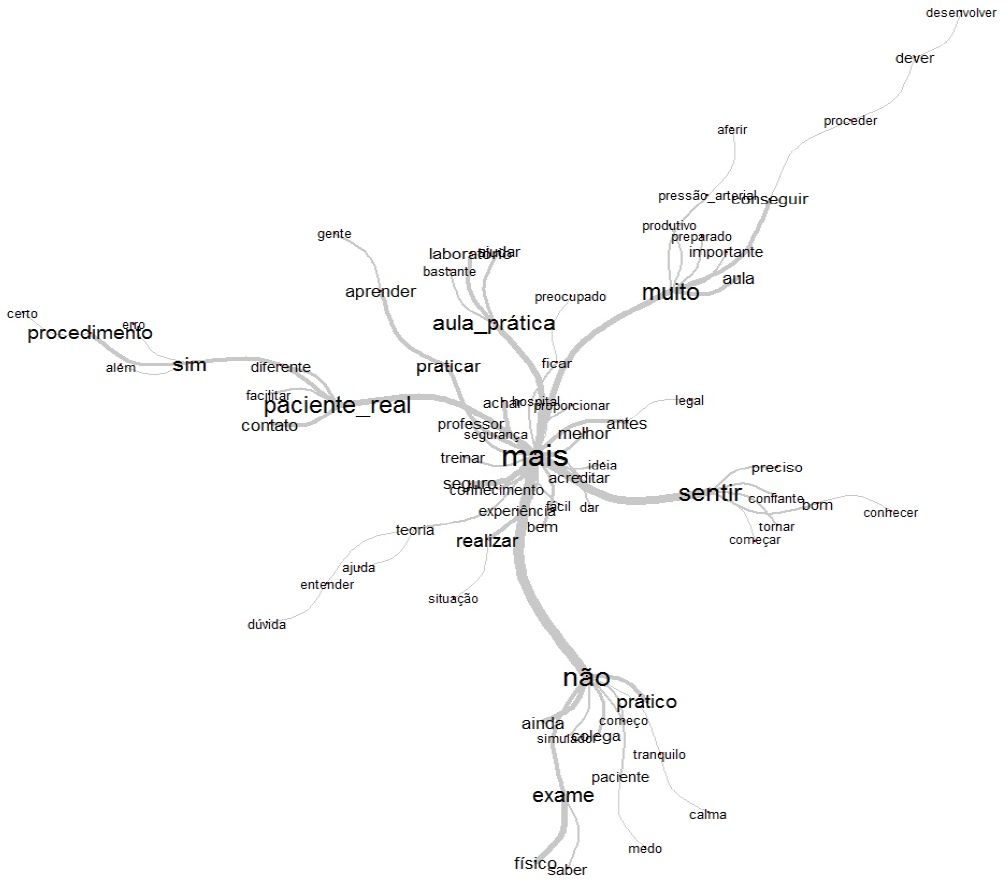Abstract
Objective
to compare the perception of nursing students and the contributions of teaching with clinical simulation or conventional practical classroom skills in the first clinical hospital experience.
Method
a descriptive, qualitative research involving undergraduate nursing students from a public university in Brazil, submitted to a high fidelity clinical simulation or conventional practical class, which took place between 2015 and 2016. For data evaluation, a word cloud and similarity analysis of the IRAMUTEQ® software were used.
Results
Altogether 54 students participated, 27 of them in each group. The words most evoked by the simulation group were: “real patient, no, more and simulator”, related to the capacity of reflection regarding their knowledge and preparation. The most evoked by the conventional practice group were: “more, no, much and feel”, related with the perception that the conventional class helps in the acquisition of skills, however, more frequency is needed.
Conclusion
Both strategies contributed positively to the first clinical hospital experience. However, the simulation provided a critical-reflexive view of skills, deficiencies and greater self-confidence in relation to conventional practice. This study strengthens the evidence of the benefits provided by simulation-based teaching, and the importance of teaching institutions making appropriate use of this strategy.
Keywords:
Simulation Technique; Simulation Training; Students, Nursing; Learning; Teaching

 Thumbnail
Thumbnail
 Thumbnail
Thumbnail
 Thumbnail
Thumbnail
 Source: The authors (2017).
Source: The authors (2017).
 Source: the authors (2017)
Source: the authors (2017)
 Source: the authors (2017)
Source: the authors (2017)